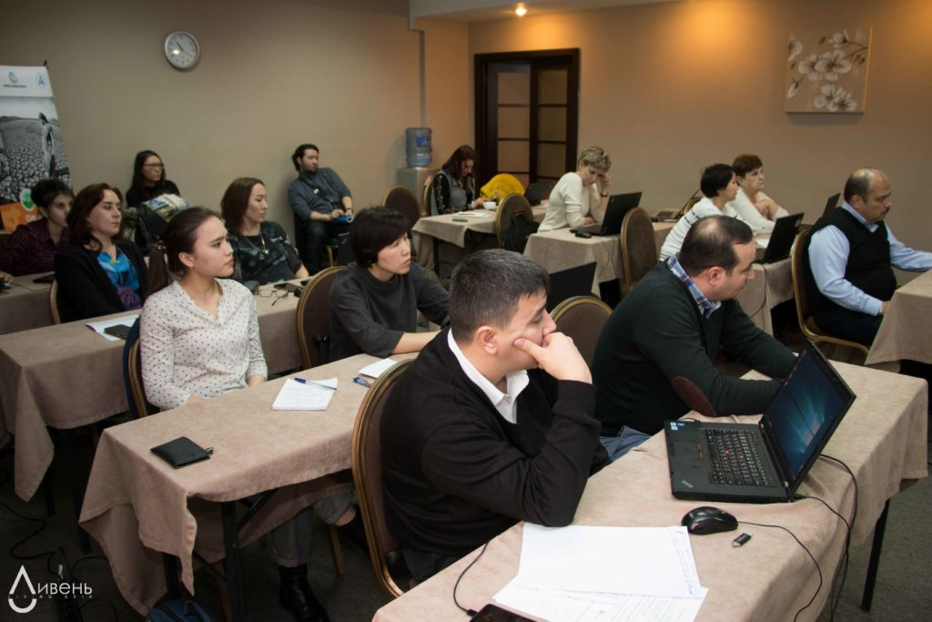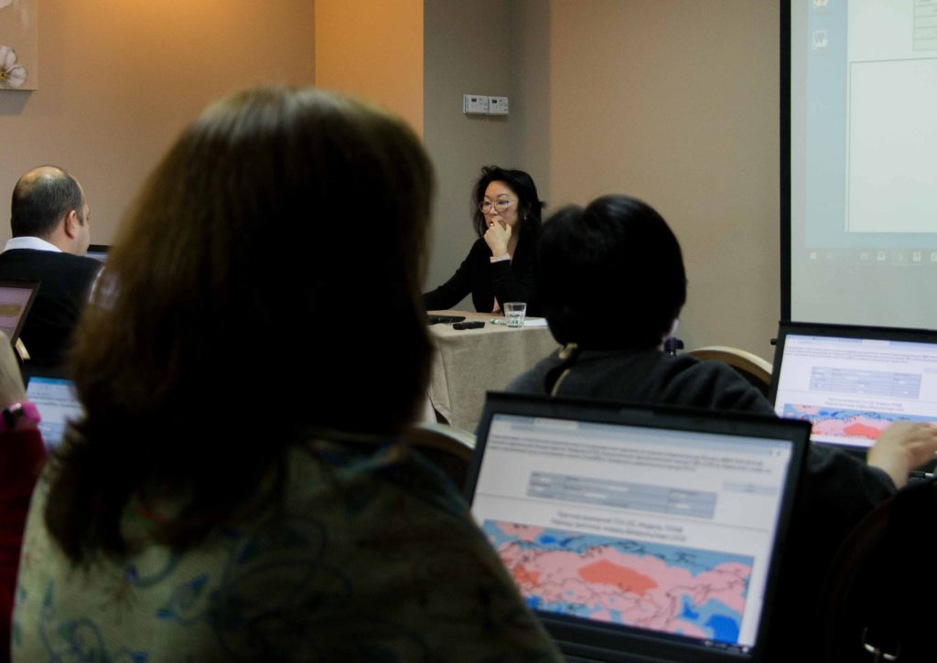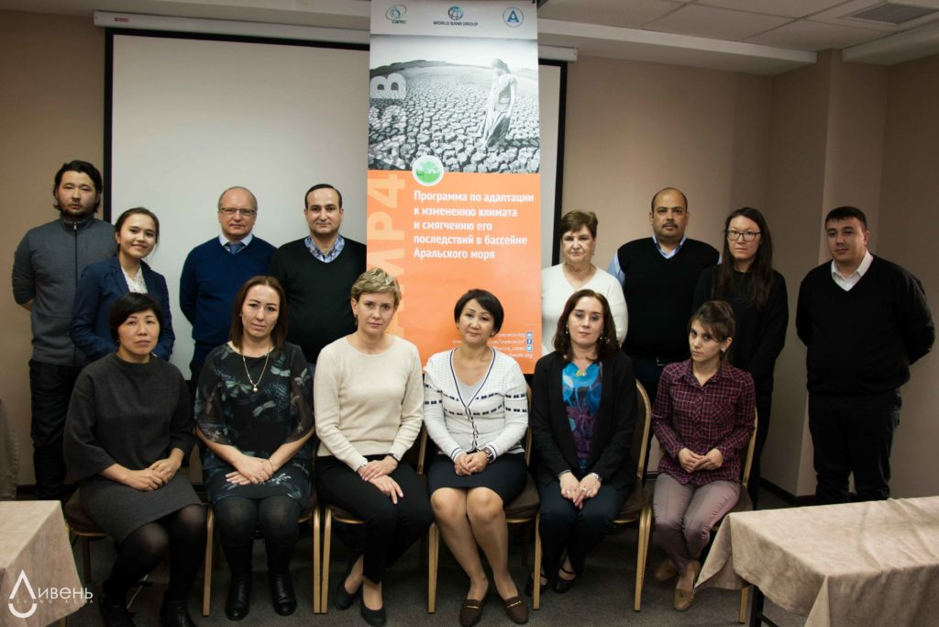From January 20 to 24, 2020, a training for specialists of the hydrometeorological services of Central Asia was held in Almaty. Training participants from Kazakhstan, Tajikistan, Turkmenistan and Uzbekistan received advanced, latest tools and techniques for making more accurate long-term forecasts.

The training was held under the educational program conducted by the Regional Environmental Center for Central Asia (CAREC) as part of the “The Climate Adaptation and Mitigation Program for the Aral Sea Basin” (CAMP4ASB), funded by the World Bank.
“In a constantly changing climate, a lot depends on the accuracy of forecasts. Timely and high-quality weather forecasts can significantly reduce the damage from mudflows and floods, dust storms, droughts and such dangerous weather events as snowstorms, hail, showers and high temperatures”, noted Zhanna Babagalieva, Specialist at the CAREC Climate Change and Sustainable Energy Program.

“The Climate Adaptation and Mitigation Program for the Aral Sea Basin” has mainly focused on the transfer of advanced forecasting methods to Central Asia.
The development of new, advanced methods will help to increase the personnel potential of the hydrometeorological services in the region and, as a result, to improve the quality of forecasts.
Over the course of a week, the participants of the training were receiving theoretical knowledge and putting them into practice under the guidance of experienced Russian specialists.
One of the trainers was the head of the Federal State Budgetary Institution of the North-West Administration for Hydrometeorology and Environmental Monitoring of Roshydromet, candidate of geographical sciences - Valery Y. Tsepelev, who has 30 years of experience in long-term forecasting. He shared his skills in working with his singature long-term forecasting program “LONG-TERM SYNOPTIC”. A unique program is being used in many centers of long-term forecasting. It is constantly being improved and helps meteorologists to significantly reduce labor costs. “LONG-TERM SYNOPTIC” allows you to automate forecasting and improve its quality.

As you know, forecasts сan be SHORT-TERM (12-72 hours) and LONG-TERM (30 days-2 years).
These days the forecasters managed to achieve a high degree of accuracy in short-time forecasts. However, as per Valery Yuryevich, the long-term forecasts are still not science, but rather an art.
This is because:
· firstly, monthly forecasts mostly do not depend on the initial conditions of the atmosphere. External energy inflows determine the future air temperature by 85-90%. Long-term forecasts depend on the state and dynamics of development of heat sources external to the atmosphere, such as the ocean, land surface (ice, snow cover and soil moisture). In addition, external heat sources are solar activity, the content of greenhouse gases in the atmosphere, volcanic emissions, etc;
· secondly, all existing models of long-term forecasting are imperfect. They need to be used in combination;
· thirdly, despite the rapid growth of computers, their power is not enough to take into account all factors in the long-term forecasts.

Meanwhile, long-term forecasts are the ones that are in demand in such sectors of the economy as:
· AGRICULTURE (to determine the area of crops, the optimal timing of sowing, the timing of fertilizing and harvesting);
· WATER RESOURCES MANAGEMENT (to prevent possible floods, the proper irrigation activities, etc.);
· POWER (information on the needs of the population and industry in the consumption of electricity, depending on weather conditions), etc.
The second speaker of the training was the Executive Director of the North Eurasian Climate Center (NEACC), Doctor of Geographical Sciences - Valentina Moiseevna Khan. She introduced the participants to the hydrodynamic methods of long-term forecasting. Participants had the opportunity to study ensemble forecasting systems and understand the features of making consensus seasonal forecasts. Consensus forecasts are compiled on the basis of synoptic-statistical and ensemble methods.

Seminar participants noted the great usefulness of this seminar. Here are some reviews:
“Thanks to the training, we got tools that will save us from manual work. And it was also very useful to exchange experiences with colleagues. In particular, my colleagues showed me how one method works. I knew about it before, but I did not know how to use it.”
“It is a matter of fact that our usual forecasting methods began to work worse. So, during the training Valery Yuryevich and I, at my request, looked at all the possible options for one of the forecasts. And it became clear that according to old methods an accurate forecast in this situation was simply impossible to do. It was very useful for me to learn about how hydrological methods work.”
“It is difficult for us to solve such complex topics as long-term forecasts alone. And, therefore, it is important to unify our resources. So the value of this training is very high.”
“Consumers of our Hydromet forecasts have high demands. Our traditional consumers are farmers and water workers, and it is precisely seasonal forecasts that are important to them. During this training we received very important knowledge on how to make more accurate long-term forecasts.”
“It was very interesting and informative. My understanding of the long-term forecast has expanded. At first, it was not easy to do practical exercises, because it was my first time using new forecasting methods. It was nice to meet colleagues from the Central Asian region. We hope that our forecasts will now be more successful.”
“... I learned a lot about models, modern resources and received a lot of information from related fields. I will definitely use the tools that I learned about at this event.”
“The content of the training was very interesting and closely related to the use of the data obtained for the operational work of making the forecast. Along with this, many new ideas for research purposes were considered.”
“Nowadays seasonal forecasting in hydromet is carried out only as part of participation in NEACC. The knowledge and skills gained during the training will expand the capabilities of the hydromet in seasonal forecasting.”
“I would like more such seminars to improve the quality in future work. All my knowledge will be used in my work to improve the forecasting of seasonal forecasts.”

To consolidate CAREC materials, the project plans to conduct a series of national seminars in each hydrometeorological service of the countries of the region. Also, the new “LONG-TERM SINOPTIC” software will be installed in all Central Asian hydrometeorological services.